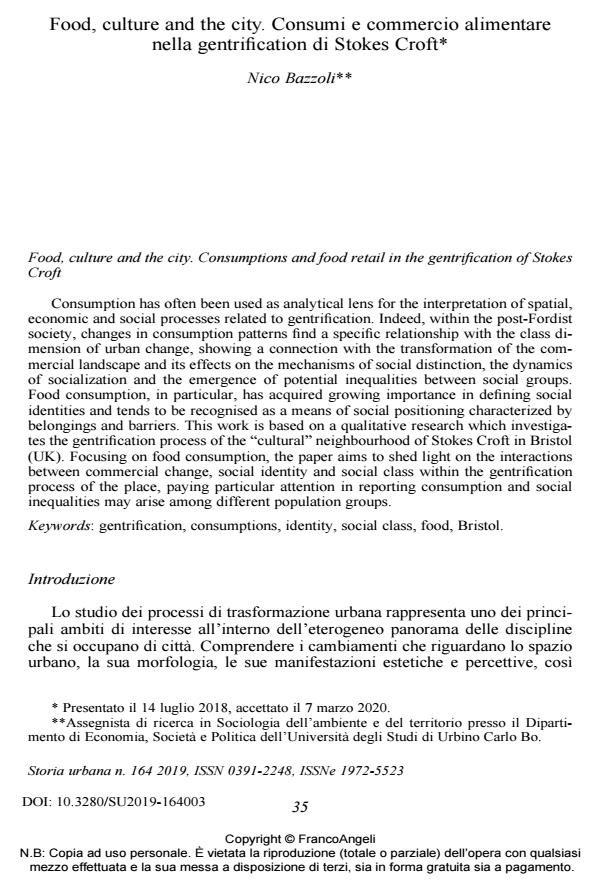Food, culture and the city. Consumptions and food retail in the gentrification of Stokes Croft
Journal title STORIA URBANA
Author/s Nico Bazzoli
Publishing Year 2020 Issue 2019/164
Language Italian Pages 24 P. 35-58 File size 374 KB
DOI 10.3280/SU2019-164003
DOI is like a bar code for intellectual property: to have more infomation
click here
Below, you can see the article first page
If you want to buy this article in PDF format, you can do it, following the instructions to buy download credits

FrancoAngeli is member of Publishers International Linking Association, Inc (PILA), a not-for-profit association which run the CrossRef service enabling links to and from online scholarly content.
Consumption has often been used as analytical lens for the interpretation of spatial, economic and social processes related to gentrification. Indeed, within the post-Fordist society, changes in consumption patterns find a specific relationship with the class dimension of urban change, showing a connection with the transformation of the commercial landscape and its effects on the mechanisms of social distinction, the dynamics of socialization and the emergence of potential inequalities between social groups. Food consumption, in particular, has acquired growing importance in defining social identities and tends to be recognised as a means of social positioning characterized by belongings and barriers. This work is based on a qualitative research which investigates the gentrification process of the "cultural" neighbourhood of Stokes Croft in Bristol (UK). Focusing on food consumption, the paper aims to shed light on the interactions between commercial change, social identity and social class within the gentrification process of the place, paying particular attention in reporting consumption and social inequalities may arise among different population groups. Keywords: gentrification, consumptions, identity, social class, food, Bristol.
Keywords: Gentrification Consumi, Identità, Classe sociale, Cibo
Nico Bazzoli, Food, culture and the city. Consumi e commercio alimentare nella gentrification di Stokes Croft in "STORIA URBANA " 164/2019, pp 35-58, DOI: 10.3280/SU2019-164003